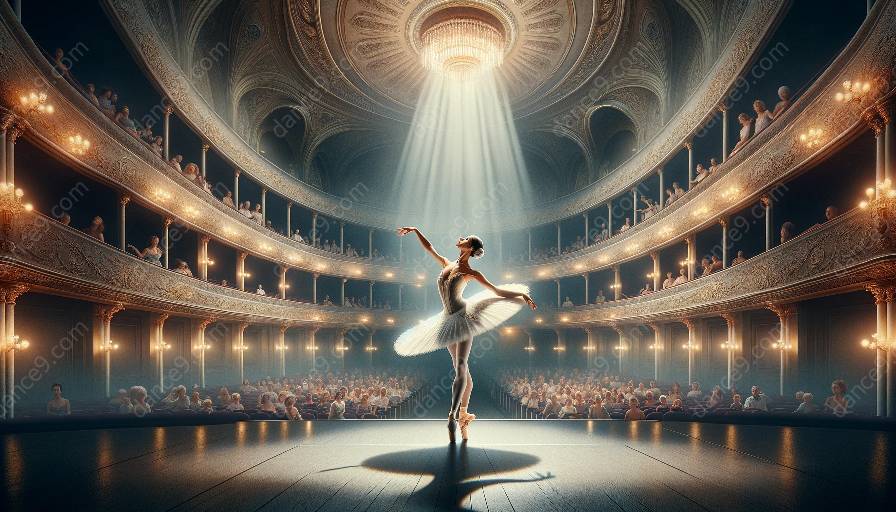Ballet, an art form that has captivated audiences for centuries, has undergone significant evolution from its origins in the Renaissance period to the present day. The history of ballet reflects changes in society, culture, and artistic expression, leading to the development of diverse styles and techniques.
Tracing the evolution of ballet involves examining key historical milestones, influential figures, and the impact of various artistic movements. From the courtly dances of the Italian Renaissance to the establishment of ballet as a professional art form in France, the art of ballet has transformed and adapted to the evolving tastes and preferences of audiences.
Origins of Ballet
Ballet's origins can be traced back to the lavish court spectacles of the Italian Renaissance, where aristocratic gatherings featured elaborate dance performances. These early expressions of ballet were characterized by intricate footwork, graceful movements, and a penchant for storytelling through dance.
Development of Ballet Technique
The evolution of ballet technique can be attributed to the pioneering work of ballet master and choreographer Jean-Baptiste Lully. Lully's contributions to the refinement of ballet movements and the codification of ballet technique laid the foundation for the technical precision and form that are integral to ballet today.
Emergence of Classical Ballet
The 19th century witnessed the emergence of classical ballet as a distinct art form, characterized by its emphasis on technique, pointe work, and narrative storytelling through choreography. Composers and choreographers such as Pyotr Ilyich Tchaikovsky and Marius Petipa played a pivotal role in shaping the evolution of classical ballet, giving rise to timeless ballet productions such as
Topic
The Significance of Ballet in Performing Arts History
View details
Physical Fitness and Muscular Development in Ballet
View details
The Role of Choreographers in Ballet Performances
View details
Influence of Ballet on Contemporary Dance Forms
View details
Contributions of Famous Ballet Dancers and Choreographers
View details
Portrayal of Ballet in Popular Culture and Media
View details
Physical and Psychological Demands of a Career in Ballet
View details
Alignment of Ballet with Body Mechanics and Anatomy
View details
Role of Ballet in Self-Discipline and Perseverance
View details
Historical and Social Contexts of Ballet Evolution
View details
Challenges and Opportunities in Preserving Ballet as an Art Form
View details
Creativity and Artistic Expression in Ballet Training
View details
Costume and Stage Design in Ballet Performances
View details
Ethical Considerations in Cultural Diversity in Ballet Performances
View details
Questions
What is the significance of ballet in the history of performing arts?
View details
What are the key elements of classical ballet technique?
View details
How does ballet contribute to physical fitness and muscular development?
View details
What role do choreographers play in the development of ballet performances?
View details
What are the fundamental principles of ballet composition and structure?
View details
How has ballet influenced contemporary dance forms?
View details
What are the different styles and techniques within classical ballet?
View details
What are the key landmarks in the history of ballet?
View details
What are the major contributions of famous ballet dancers and choreographers?
View details
How does ballet storytelling differ from other performance art forms?
View details
What is the importance of music in ballet performances?
View details
How has ballet been portrayed in popular culture and media?
View details
What are the physical and psychological demands of a career in ballet?
View details
What are the key ballet training methods and practices?
View details
How does ballet align with the principles of body mechanics and anatomy?
View details
What role does ballet play in the development of self-discipline and perseverance?
View details
How does ballet training contribute to mental agility and focus?
View details
What are the historical and social contexts that have influenced the evolution of ballet?
View details
What are the challenges and opportunities in preserving ballet as a traditional art form?
View details
How does ballet training promote creativity and artistic expression?
View details
What is the role of costume and stage design in enhancing ballet performances?
View details
What are the key differences between classical ballet and contemporary ballet?
View details
What are the ethical considerations in portraying cultural diversity in ballet performances?
View details





























